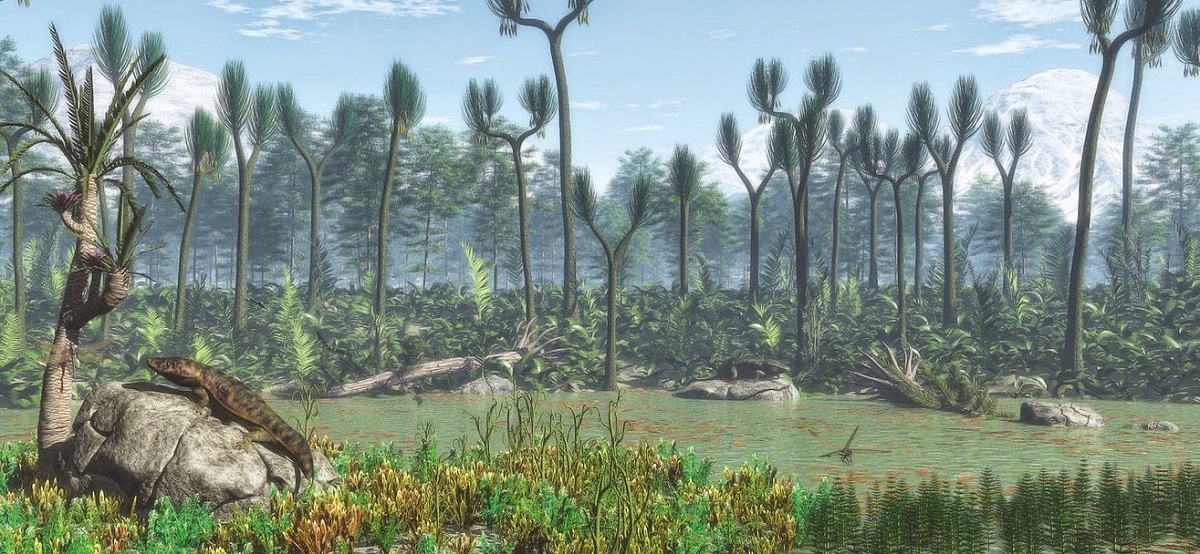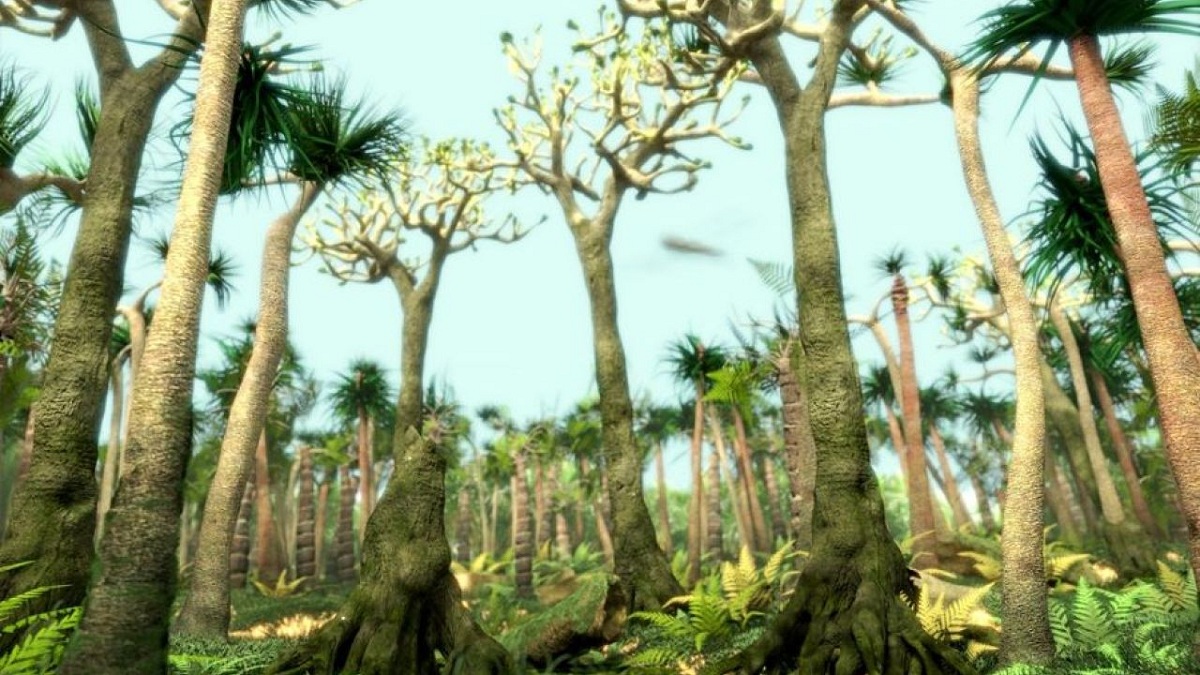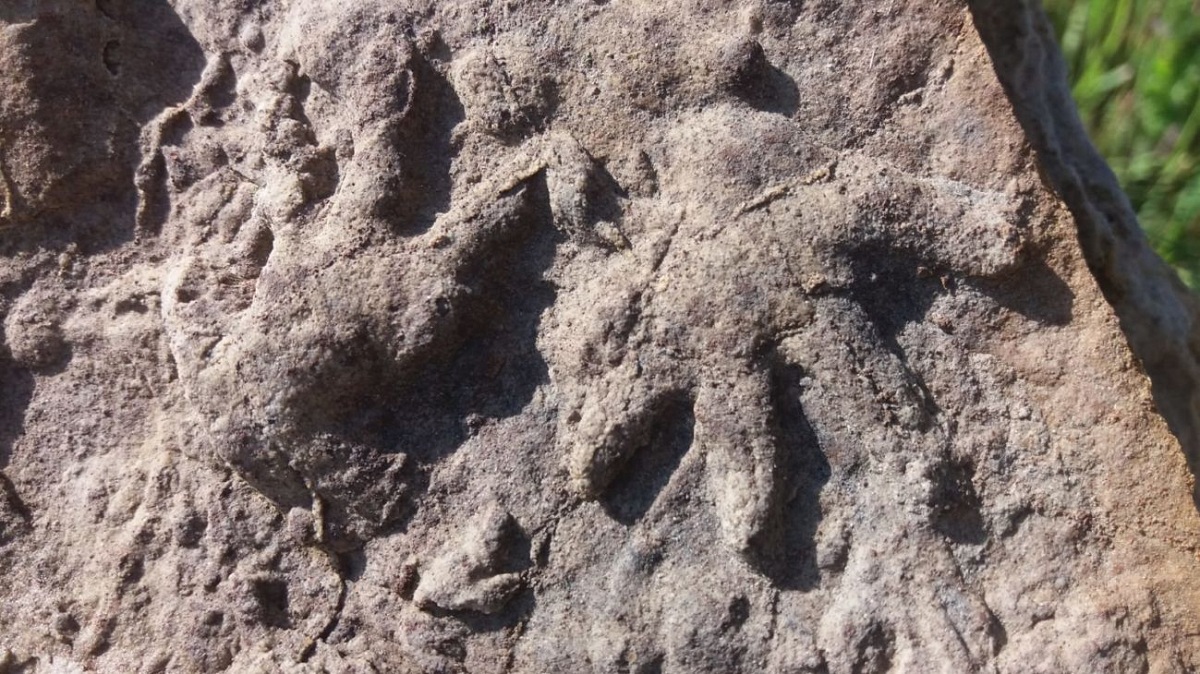
The Paleozoic is divided into several periods spanning millions of years. One of these periods is the carboniferous. It is a geological timescale division that begins approximately 359 million years ago and ended 299 million years ago, giving rise to the period Permian.
In this article we are going to tell you all the characteristics, geology, climate, flora and fauna of the Carboniferous.
Key features

Throughout this period North America it is subdivided into Pennsylvania and Mississippi. Throughout Europe there are several subdivisions such as Western Europe on the one hand and Russian on the other. Both subdivisions are difficult to correlate between them together with the American one. The main characteristics of this period are that there are large areas of the forest that have been successively buried due to the reduction in global temperature. These large wooded masses to decompose organic matter that gave rise to large layers of coal. Therefore, this period is called Carboniferous.
Throughout this period, large numbers of primitive fish species have also become extinct and cartilaginous and bony species have expanded. Amphibians began to invade the mainland and reptiles began to develop. These animal species have their climax during the Jurassic. The Carboniferous is divided into the Upper and Lower Carboniferous. During the Upper Carboniferous, insects abounded, some of them large, such as dragonflies. The dragonflies of this era were almost two feet in size with outstretched wings, and the trees were so tall that most were around 60 meters in length.
All this environment is generated thanks to an atmosphere with a high concentration of oxygen. According to estimates and research regarding this amount of oxygen could fit in the atmosphere a percentage of 35% was reached, being 21% today. The Carboniferous which is a quite active stage in the history of our planet from the tectonic point of view. We will analyze more carefully in the next section.
Carboniferous geology

During this period there have been great changes at the geological level, such as the origin of the Hercynian orogeny. This orogeny is what gives rise to the formation of the megacontinent called Pangea. Keep in mind that the glaciation ended in which glaciers spread throughout the center and south of Pangea.
At the beginning of this period the global drop in sea level that occurred at the end of the Devonian was reversed. During these millions of years the sea level was rising little by little and creating epicontinental seas in a generalized way. As we mentioned before, there was a general drop in polar temperatures in the south. He thought that southern Gondwana was a glacier entirely for the entire period. However, all of these environmental conditions did not have much of an effect in the tropics. In these areas of the planet lush forests began to proliferate in the swamps and little by little they were ascending a few degrees towards the north, moving away from the glaciers of the south pole.
Continuing with the geology we can see that a large part of Europe and North America was located in the Equator. This can be known thanks to the ancient deposits of limestone rock that is very thick. The science in charge of the study of rocks and their temporal organization is the stratigraphy. The Carboniferous rocks in Europe and North America were a continuous succession of limestone rocks, animists, shales and coal deposits. These line of succession were known as cyclothems.
Carboniferous climate

In order to deepen the information on this period, all the time is classified as lower carboniferous and upper carboniferous. During the Lower Carboniferous reaching its limit there was a global drop in sea level due to the expansion of the Gondwana glaciers. This caused an important regression and a cooling of the climate at a global level. When the glaciers spread, various vast continental epicontinental seas and large carbon pools of the Mississippi.
On the other hand, this drop in temperatures was increased at the south pole and produced the formation of glaciers in the southern part of Gondwana. Research is not completely clear as to whether ice sheets began to form during the Devonian or not. There was also a massive extinction of all oceanic life due to this regression of the sea level that affected crinoids and ammonoids, losing between 40% and 80% of all their genera, respectively.
Now we move on to the Upper Carboniferous. During the upper Carboniferous Gondwana contacts the continent of the ancient Red Sandstones also known as Euramérica. This causes major major phases of the formation of the Hercinic orogeny.to. The most important latitudinal temperature gradients were increased during the Upper Carboniferous. If Iberia, which was then near the other pole, also had a distinctive flora that adapted to the cold conditions.
Flora and fauna

As we have mentioned before, the fish began to spread although they regressed due to the decrease in sea level. Reptiles began to colonize the earth's surface. The presence of numerous well-marked growth rings in the fossil flora of Gondwana and Siberia they indicated that conditions were quite cold. In Europe and North America these growth rings were absent. Tropical climates ended during the Upper Carboniferous changing significantly.
Under these conditions the lycopodiofitos and the sphenophytes declined enough their populations. On the other hand, the ferns that had seeds are those that acquired a more important role and were widely spread. This seems to indicate that they had to adapt to drier climatic conditions. The coals continued to form but the lycopodiophytes were no longer the primary contributors.
In this period there were two great oceans that dominated the world: the Panthalassa and the Paleo Tethys.
I hope that with this information you can learn more about the Carboniferous period, its characteristics, flora and fauna.